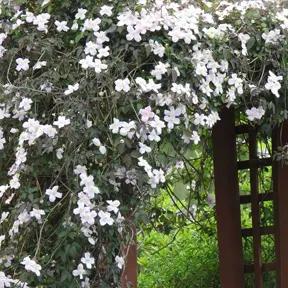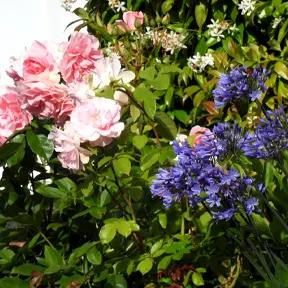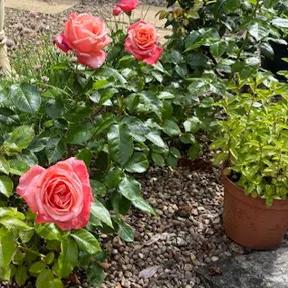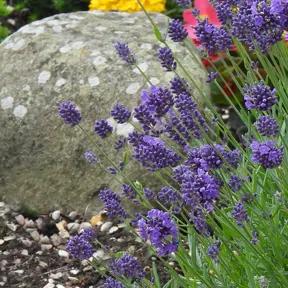Western Red Cedar Hedge Plants
Thuja plicata
Hedge Plants- AKA Giant Arborvitae
- Good for shade & chalk soil.
- Formal hedging or tall screening.
- Max. Height: 55m
- Bareroot Delivery Only: Nov-Mar.
Recommended extras
Description
Thuja plicata: Bareroot Western Red Cedar / Giant Arborvitae Hedging Plants
Delivered by Mail Order Direct from our Nursery with a Year Guarantee
Western Red Cedar, Thuja plicata, is a big, vigorous, evergreen conifer with flaky bark when it is mature and rich green aromatic leaves that smell lovely after you clip then.
It is very popular for formal hedging, or grown as tall screening.
Mature trees tend to be slender and straight, with slightly droopy, lush, leafy branches down to ground level unless they are in a shady forest situation, where they will drop their lower branches.
Browse our selection of evergreen hedging plants or our full range of hedging.
In Britain, it will reach about 30 metres as a tree.
Delivery season: Cedars are delivered bareroot during late autumn and winter, approximately November-March inclusive.
Features:
- Height: To 30m
- Soil: Any moist or well drained
- Use: Formal evergreen hedging, tall screening
- Aromatic leaves
- Must be clipped or it develops bald patches
- Bareroot delivery only: November-March
Growing Western Red Cedar
Tolerant of partial shade, it will grow on any fairly well drained soil, including chalk.
While it is gaining height, you can clip it once a year in September. As a mature hedge, trim it twice a year for best results, in May or June and again in August or September; don't clip it later, or the new growth won't have time to harden before winter.
Can you hard prune Thuja?
Unlike other conifers (apart from Yew), the answer is yes, but it is far better to trim it twice a year and avoid ever needing to cut it back hard.
While it does regrow from old wood, it can take several years, and harsh winter winds may keep setting new growth back.
If you have a neglected Thuja plicata hedge and need to cut it back to size, our 8-step plan, executed over two years, should reduce the amount of time you spend looking at bald brown patches.
We do not recommend cutting it back all in one year, as this will increase recovery time significantly.
Year one of hard pruning:
Step 1: Between March and May, cut the top off about 12 inches / 30cm below the height that you want it to be, using twine between posts at either end of the hedge to guide you.
This will let light down into the centre, and with most hedges you won't see the bald top from ground level. If it is high up, hire a professional (if you insist on using a really stable ladder with someone on the ground to support it, you didn't get the idea from us).
If possible, make the top pointy either like this ^, or slanted in only one direction, which will aid the regrowth of leaf buds at the tip, but that is a bonus: a flat top will suffice.
Step 2: All over the side of the hedge, prune back roughly 50% of the horizontal stems by 12 inches / 30cm, using secateurs.
Do this in a sort of chess board pattern - it won't be that neat, but the idea is to prune a stem and then leave the stems directly above, below, and to either side unpruned.
This will let more light into the centre and encourage leaf bud formation on the pruned wood, while leaving plenty of green growth to photosynthesize and fuel regrowth.
Step 3: As always, after a serious prune, water well if the weather has been dry and then mulch well.
If there is a heatwave in summer, water your hedge thoroughly about once a week, maybe longer on heavy clay: overwatering is also bad, so deep soakings spaced apart are best.
Drying out in summer, along with harsh winter winds, are the two main reasons for sluggish regrowth.
Step 4: During August or September, trim the sides, aiming to leave only a couple of centimetres of green growth.
You are trimming the parts that you did not prune in Spring as far back as possible, without cutting back into brown wood.
Step 5: If the weather is dry, water well, and give the hedge a light feed with a high potash but low nitrogen fertiliser to help the wood ripen before winter.
Year two of hard pruning:
Step 6: Between March and May, prune all the stems on the side of the hedge that you did not prune last year in step 2 (i.e. the ones you only trimmed in step 4).
When this is done, you will clearly see how well the stems you pruned last year are regrowing - hopefully they look decent!
Step 7: You guessed it: water well if necessary, and top up the mulch. Water well in dry summer spells
Step 8: During August or September, as in step 4, trim the sides again, aiming to leave only a couple of centimetres of green growth.
After this, your hedge should look somewhat even again, with all the regrowth more or less at the same length.
Year three:
Option A: Your hedge is at the size you want it. Congratulations! Resume normal trimming twice a year.
Option B: Your hedge is still too wide. No worries! Go back to step 2 and continue pruning the sides in the same chess board pattern, taking off another 30cm this year from the stems you first pruned two years ago, and continuing next year on the other stems. You can repeat this two-year cycle for as long as it takes.
Planting Instructions
How to plant:
Single row: 3 plants per metre
Prepare your site before planting:
Destroy the weeds first: nettles, brambles and ground elder are tough. Then dig the soil over; remove rocks, roots and other rubbish. Mix in well rotted compost or manure. If your soil is rich, you don't have to dig it over, but killing all the weeds is still necessary. Watch our video on how to plant a garden hedge for full details. The plants in this video are delivered pot-grown, but planting out bareroot stock is essentially the same. Remember to water establishing plants during dry weather for at least a year after planting.
Hedge Planting Accessories:
Prepare your site for planting by killing the weeds and grass.. We recommend using Rootgrow whenever you plant hedging
Did You Know?
The largest Red Cedar alive today is 55 metres, but there was a 71-metre tall tree that was destroyed by fire in 1972, which was about 700 years old.
The rot resistant wood has been used for a wide range of purposes, from garden sheds to Native American canoes. Mature wood contains a powerful fungicide called Thujaplicin, which makes the timber so durable.
They were of huge importance to the Native Americans of the Northwest Coast of America; felling one large tree using mostly stone tools and controlled fires would take a week or more.
The fibrous bark is perfect for essential products like rope, clothes and baskets.
Formerly classified as Thuja gigantea and Thuja lobbii, other common names include the British Columbia or Californian red cedar, and the Giant Nootka Sound arbor-vitae.
It's Summer Planting Season 2025

Pot Grown & Plug Plants Delivered

Direct from the Nursery Value

No more broken plants in the post!


 1.webp)
 1.webp)
 2.webp)
 3.webp)





